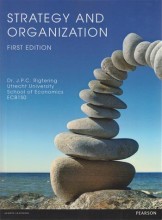Organizational Transformations: Birth, Growth, Decline, and Death
27 important questions on Organizational Transformations: Birth, Growth, Decline, and Death
How do you call a sequence of stages of growth and development through which organizations may pass?
How do you call people who recognize and take advantage of opportunities to use their skills and competences to create value?
How do you call the founding of an organization: a dangerous life cycle stage associated with the greatest chance of failure?
- Higher grades + faster learning
- Never study anything twice
- 100% sure, 100% understanding
How do you call the dangers associated with being the first in a new environment?
What are the four stages of developing a business plan?
- Notice a product opportunity, and develop a basic business idea
- Conduct a strategic (SWOT) analysis
- Decide whether the business opportunity is feasible
- Prepare a detailed business plan
How do you call a theory that seeks to explain the factors that affect the rate at which new organizations are born (and die) in a population of existing organizations?
How do you call the particular sets of resources?
How do you call the number of organizations that can compete for the same resources in a particular environment?
How do you call the benefits an organization derives from being an early entrant into a new environment?
How do you call a strategy of entering an environment late, after other organizations have tested the water?
How do you call organizations that concentrate their skills to pursue a narrow range of resources in a single niche?
How do you call organizations that spread their skills thinly to compete for a broad range of resources in many niches?
What are the four strategies for competing in the resource environment?
- R-specialist
- r-generalist
- k-specialist
- k-generalist
How do you call the process that ensures the survival of the organizations that have the skills and abilities that best fit with the environment?
How do you call the life cycle stage in which organizations develop value creation skills and competences that allow them to acquire additional resources?
How do you call a theory that studies how organizations can increase their ability to grow and survive in a competitive environment by satisfying their stakeholders ?
How do you call the set of values and norms in an environment that govern the behaviour of a population of organizations?
How do you call the similarity among organizations in a population?
What are the three processes that explain why organizations become the same?
- Coercive isomorphism (Because of pressure)
- Mimetic isomorphism (Intentionally)
- Normative isomorphism (Indirect)
What are the six growth stages of Greiner's model of organizational growth that are introduced with a crisis point? (failure to proceed to the next stage results in falling in the chasm)
- Creativity
- Direction
- Delegation
- Coordination
- Collabration
- Failure
What are the four crisis stages of Greiner's model of organizational growth?
- Crisis of leadership
- Crisis of autonomy
- Crisis of control
- Crisis of red tap
How do you call the life cycle stage that an organization enters when it fails to anticipate, recognize, avoid, neutralize, or adapt to external or internal pressures that threaten its long-term survival?
How do you call a measurement of how well a company is making use of resources relative to its competitors?
How do you call forces inside an organization that make it resistant to change?
What are the three forces inside an organization that make it resistant to change?
- Risk aversion
- The desire to maximize rewards
- Overly bureaucratic culture
What are the four reasons for organizational decline and death?
- Effectiveness and profitability
- Organizational inertia
- Changes in the environment
- Weitzel and Jonsson's model or organizational decline
What are the five stages of Weitzel and Jonsson's model of organizational decline?
- Blinded
- Inaction
- Faulty action
- Crisis
- Dissolution
The question on the page originate from the summary of the following study material:
- A unique study and practice tool
- Never study anything twice again
- Get the grades you hope for
- 100% sure, 100% understanding
































